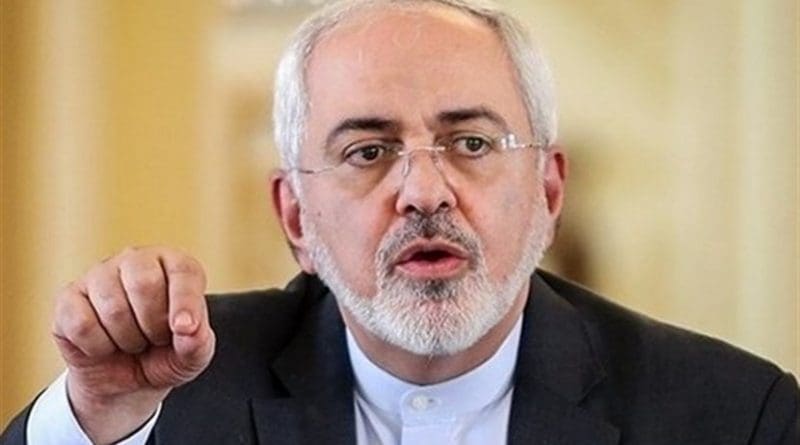Establishing Censorship Outside Iran – OpEd
By Reza Shafiee
Traditionally dictators limit their human right violations to their own people and within their geographical borders but this logic do not apply in the case of the Iranian regime. Iranian regime Foreign Minister Mohammad Javad Zarif almost caught everyone by surprise when he asked Twitters CEO Jack Dorsey to close down Iranian accounts on Twitter opposing his regime. This is new. On Sunday he accused Twitter of “closing accounts of “real” Iranians, while allowing anti-government ones backed by the United States.” In August, Facebook Inc, Twitter Inc and Alphabet Inc collectively removed hundreds of accounts tied to an Iranian propaganda operation.
“Hello @Jack. Twitter has shuttered accounts of real Iranians, (including) TV presenters & students, for supposedly being part of an ‘influence op’,” Zarif said in a tweet, addressing Twitter CEO Jack Dorsey.
“How about looking at actual bots in (the Albanian capital of) Tirana used to prop up ‘regime change’ propaganda spewed out of (Washington) DC? #YouAreBots,” Zarif said.
Since Zarif’s targeted the Iranian regime’s main opposition the People’s Mojahedin Organization of Iran (PMOI/MEK) and its partner the National Council of Resistance of Iran (NCRI), Mohammad Mohadissen, NCRI’s Foreign Affairs Committee Chair twitted back: “RIDICULOUS! Mullahs FM tries 2cover up the scandal of the closure of regime’s fake accounts, by asking Twitter 2close #Iran resistance accounts,thus mobilized Trita Parsi&other agents &paid TV programs. The anxiety of the main sponsor of terror from ppl uprising prior 2oil sanctions.”
Zarif knows that Iranian people are fed up with the mullahs’ regime and want it gone. He is nostalgic for the 1980s when the theocratic regime tortured and killed thousands of Iranian dissidents in dark cells. This summer marked the 30th anniversary of the shocking massacre of 30000 political prisoners. It was a crime unprecedented since World War II. Back then with the exception of families of political prisoners hardly anyone was aware of the full extent of the regime’s atrocities. Had there been social media, it would have been a totally different picture.
Following Zarif’s accusation, Iranian Internet activists began a campaign on Twitter — #WeAreNotBots — and posted comments like, ‘There’s no robot involved, we are the real people! We’ve been denied our right to free expression and get severely cracked down on freedom of speech and free use of press or cyberspace.”
It is obvious that Ali Khamenei and his partners in crime such as his foreign minister would miss those days.
What is Zarif really up to?
Digging a little deeper the truth revel itself. In the age of social media and fast growing digital technologies and information era the Iranian regime is confused. It feels that it is losing control of the people. Iranian protests of past 8 months show that Supreme Leader Ali Khamenei and the Revolutionary Guards are worried sick of social media and people’s access to internet. The regime blamed the social platforms for helping the protesters organize and regroup. Telegram’s role was unique. The regime was caught off guard when the first waves of protests hit cities across Iran.
According to numbers from official sources about 40 million Iranians used Telegram in January.
Social media has become a nightmare for ruling mullahs in Tehran. Friday prayer leaders, IRGC top commanders and Hassan Rouhani the president in an orchestrated act of public deception warn against social media platforms. Rouhani’s Ministry of Information and Communications Technology’s first task is to come up with plans to slow the internet and provide sophisticated filters for social media.
According to the UN, approximately 53% of Iran’s 80m citizens are internet users. Roughly 60% of the country’s population is under the age of 30, and there are estimated to be more than 40m mobile phone users in the country – almost all of whom are registered on messaging app Telegram, which offers encryption.
Mostafa Tajzadeh, a regime strategist close to Rouhani’s camp is alarmed with the role social media plays in today’s Iran. He said: “Open access to social media is yet another problem. This is unprecedented and we have never faced such dilemmas all at once.”
A game-changer
What has become a game-changer and a factor the regime cannot ignore is its main opposition, the MEK’s Resistance Units legitimately using social media platforms to shine light on its suppressive measures against Iranian citizens. The regime wants this voice silenced at all costs. Khamenei struggles to keep everyone and most of all Iranian people in the dark. Thanks to social media including Twitter for their work. Keeping the free flow of information is a must. The Iranian regime simply wants to stifle science and hide the truth.
*Reza Shafiee is a member of the Foreign Affairs Committee of the National Council of Resistance of Iran (NCRI). He tweets @shafiee_shafiee


Zarif and his regime used to say that pmoi has no connection with world and don’t know what internet is! It seems that liar has short memory !